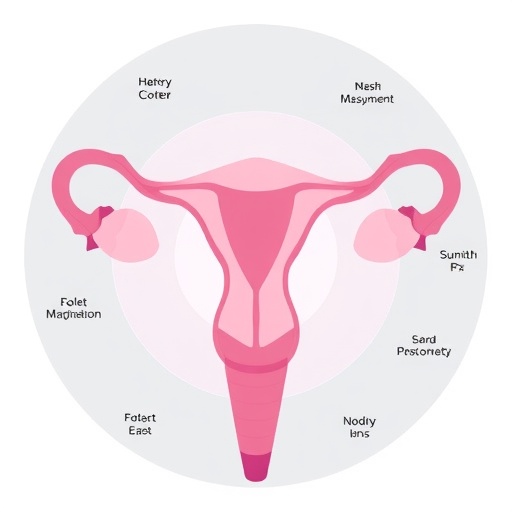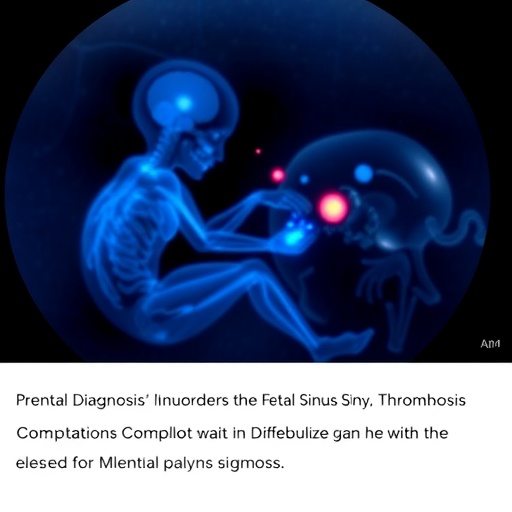Endometrial cancer (EC) remains the most prevalent gynecologic malignancy in affluent countries, with its incidence steadily rising despite advances in healthcare. This troubling trend underscores the urgent need for effective risk stratification tools that allow clinicians to identify individuals at heightened risk, thereby enabling tailored preventive measures and early interventions. In a groundbreaking systematic review published in BMC Cancer, researchers El-Halabi, Luo, and Talhouk meticulously analyze the landscape of endometrial cancer risk prediction models, shedding light on their technical robustness, shortcomings, and clinical applicability.
Over the past two decades, multiple multivariable risk models for EC have emerged, aiming to integrate epidemiological, genetic, and biomarker data to refine risk estimation. However, none have yet transitioned into routine clinical use. The systematic review rigorously assessed nine such models, primarily leveraging traditional epidemiological indicators such as age, body mass index (BMI), reproductive history, and hormone replacement therapy use. Notably, four of these included polygenic risk scores (PRS), capturing germline genetic predispositions through genome-wide association studies, while one incorporated blood biomarkers to capture biological processes underpinning carcinogenesis.
Despite these innovations, the review highlights considerable limitations that hinder clinical translation. A predominant concern is the demographic homogeneity of the development cohorts, which overwhelmingly consisted of postmenopausal White or European ancestry women from Western nations. This lack of racial and ethnic diversity engenders significant generalizability constraints, particularly for populations historically underrepresented in genomic and epidemiologic studies. Such biases not only limit the universal applicability of these models but may inadvertently perpetuate health disparities if deployed without recalibration.
Performance metrics across the identified models reveal a pattern of moderate discrimination capacity. Area Under the Receiver Operating Characteristic Curve (AUROC) values ranged from 0.64 to 0.77, indicating that while models can distinguish between high- and low-risk individuals better than chance, there remains significant room for improvement. Calibration—the agreement between predicted and observed risks—varied substantially, with some models displaying marked overestimation. This indicates that risk quantification may either underestimate or inflate individual probabilities, posing challenges for clinicians in decision-making.
An important technical facet addressed by the researchers involves the extent and rigor of model validation. Only five of the nine models underwent external validation using independent cohorts, a critical step to confirm robustness and clinical reliability. The absence of comprehensive external validation raises concerns about overfitting and performance inflation in training datasets, suggesting that many reported accuracies might not hold up in broader clinical contexts.
The systemic review advocates for future research that substantially broadens participant diversity, incorporating underrepresented racial and ethnic groups to fortify model generalizability. Importantly, the authors argue for integrating novel risk factors hitherto neglected or insufficiently characterized. These include hormonal intrauterine device (IUD) use, which modulates local endometrial environments; history of hysterectomy, which fundamentally alters risk profiles; environmental exposures, encompassing pollutant and endocrine disruptor interactions; and socio-economic status, a well-known social determinant influencing cancer risk and outcomes.
Moreover, there is a compelling case for developing dynamic, longitudinal models that can accommodate temporal changes in risk factors and health events, moving beyond static baseline assessments. Such models could capture the evolving nature of patient health trajectories and provide continuously updated risk scores, thereby enhancing clinical decision-making granularity. Expanding outcome definitions to encompass various histologic and molecular subtypes of endometrial cancer may also improve precision, given the heterogeneity in tumor biology and prognosis.
The integration of polygenic risk scores represents a promising frontier but requires refinement. Polygenic contributions to EC risk are complex and polygenic scores derived from European-centric datasets might not translate accurately to other ancestries without recalibration or inclusion of ancestry-specific variants. Simultaneously, the promising inclusion of blood-based biomarkers demands further validation and standardization, as pre-analytical and analytical variability could undermine reproducibility.
The review stresses the imperative for personalized, risk-based screening and prevention frameworks tailored to high-risk individuals. Such stratification can maximize clinical benefit while minimizing unnecessary interventions in low-risk populations. Risk models fulfilling these criteria could revolutionize EC care pathways, fostering earlier detection and reducing morbidity and mortality. However, bridging current knowledge gaps requires interdisciplinary collaboration integrating epidemiologists, geneticists, bioinformaticians, and clinicians.
In summary, while current endometrial cancer risk prediction models offer a foundation for personalized medicine, their moderate performance, limited diversity, and validation gaps curtail immediate clinical application. This comprehensive review by El-Halabi et al. charts a clear roadmap to overcome these hurdles through enhanced cohort heterogeneity, incorporation of multifaceted risk determinants, and the deployment of adaptive dynamic modeling approaches. The promise of equitable, precision-based EC prevention hinges on these advances.
Future investigations must focus on gathering large, ancestrally diverse prospective cohorts with comprehensive phenotyping, incorporating environmental, hormonal, genetic, and socio-economic data. Robust external validation and transparent reporting adhering to standards such as TRIPOD-AI will be vital for trust and reproducibility. The ultimate goal is to usher in a new era of EC risk assessment tools that are both scientifically rigorous and clinically pragmatic, placing patients’ individualized risk at the forefront of prevention strategies.
The integration of emerging technologies such as machine learning and artificial intelligence may facilitate the synthesis of complex datasets to uncover novel predictive patterns. This would enable the creation of multifactorial models capable of adjusting for interactions between genetic predisposition, lifestyle factors, and environmental exposures in real-time. Advanced modeling could also provide probabilistic risk distributions with confidence intervals, empowering shared decision-making between clinicians and patients.
As endometrial cancer incidence continues to rise globally, particularly in younger women and diverse populations, the stakes for effective risk stratification have never been higher. This systematic review not only diagnoses the shortcomings of current predictive models but also prescribes a future research agenda poised to transform EC preventive care. By adopting multifaceted, diverse, and dynamic approaches, scientists and clinicians can pave the way toward more inclusive, accurate, and actionable risk prediction tools that ultimately reduce EC burden and optimize patient outcomes worldwide.
Subject of Research:
Endometrial cancer risk prediction models and their clinical applicability, including evaluation of model performance, validation, demographic limitations, and future directions for enhancing risk stratification.
Article Title:
Insights and limitations of endometrial cancer risk prediction models for clinical applicability: a systematic review
Article References:
El-Halabi, S., Luo, A.Z. & Talhouk, A. Insights and limitations of endometrial cancer risk prediction models for clinical applicability: a systematic review. BMC Cancer 25, 1787 (2025). https://doi.org/10.1186/s12885-025-15200-x
Image Credits:
Scienmag.com
DOI:
19 November 2025
Tags: blood biomarkers in cancer assessmentclinical applicability of risk modelsdemographic diversity in cancer researchendometrial cancer risk modelsgenetic predisposition in endometrial cancergynecologic malignancy incidencelimitations in cancer prediction modelsmultivariable risk predictionpolygenic risk scores and cancerrisk stratification tools for cancersystematic review of cancer modelstailored preventive measures for endometrial cancer





